Hong Kong police deployed a bomb disposal robot in Tai Kok Tsui after a suspicious object was found during Sunday’s protests.

At around 6.20pm, the remote-controlled robot navigated towards what appeared to be a cardboard box with wires sticking out of it. A loud bang was heard as the robot detonated it on the junction of Tong Mi Road and Lai Chi Kok Road. It is unclear whether the box was an improvised explosive device.
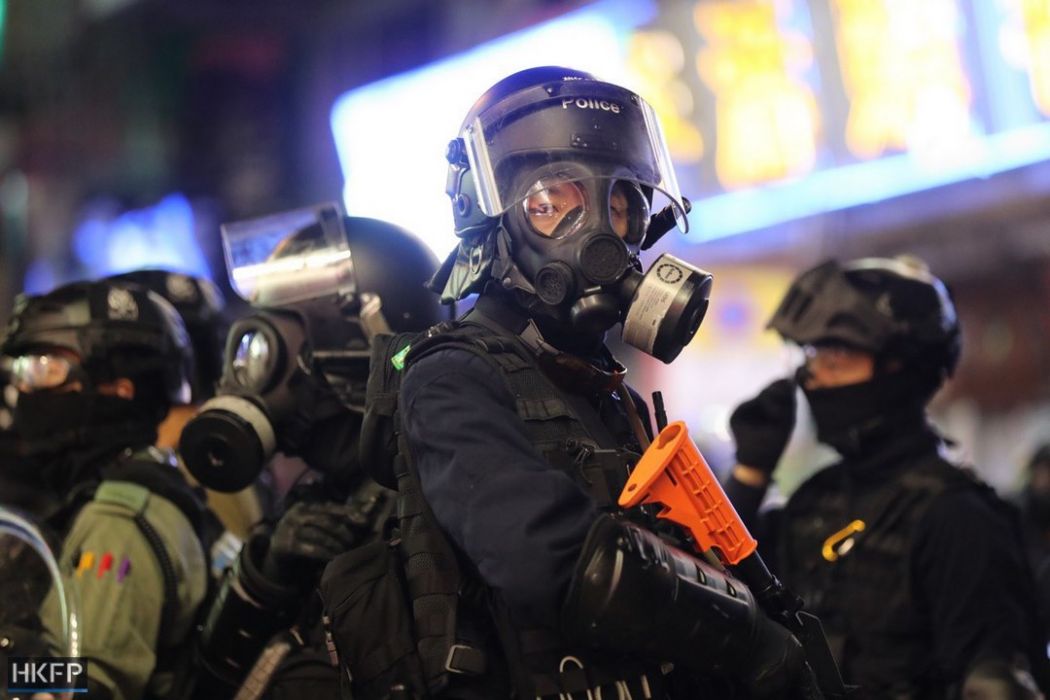
In a press release just before midnight, the government condemned protesters and said suspected explosive items were found in several areas.

“The Hong Kong Special Administrative Region Government strongly condemns the acts of the rioters which completely disregard law and order, severely undermining social order. Without regard to people’s safety, rights and needs, those acts are extremely irresponsible,” it added.

A seven-seater van and a taxi were stopped by police in Tai Po, according to RTHK. Over 40 petrol bombs were seized and the two drivers – both in their 30s – were arrested.

Earlier, hundreds of thousands marched in Kowloon in opposition to an anti-mask law imposed by the government.
Familiar scenes of unrest broke out within hours as water cannon, projectiles and tear gas were deployed by riot police.
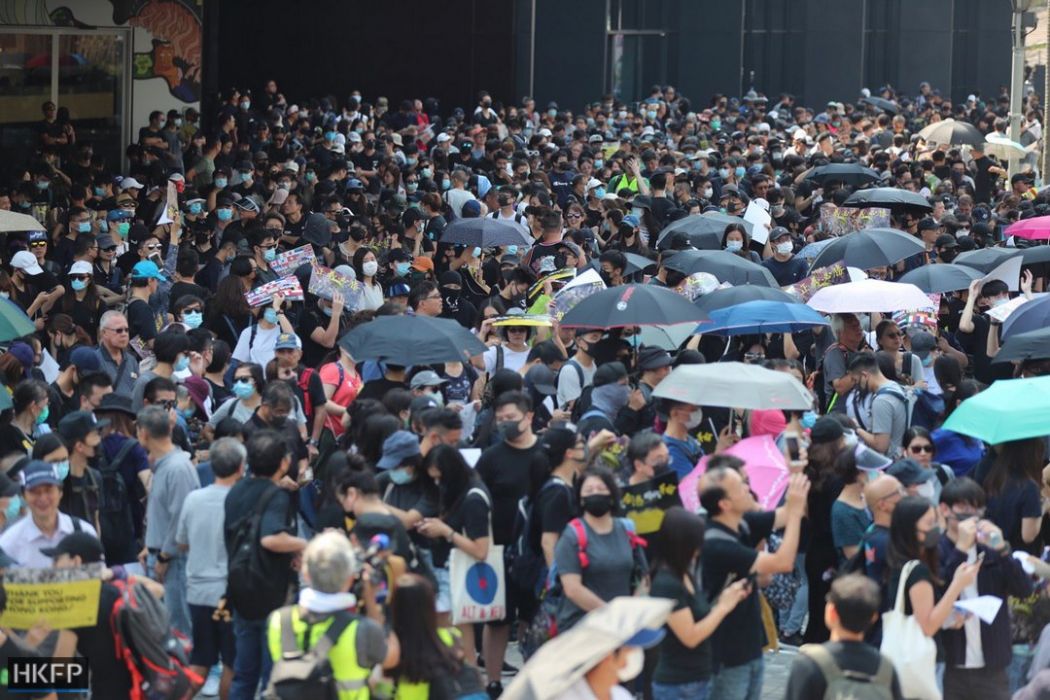
At one point, police fired blue water cannon dye at the steps of Kowloon Mosque, prompting anger from the Muslim community. The force later apologised for what it described as an “accident.”

Meanwhile, protesters threw Molotov cocktails, set fires, vandalised stores, MTR exits and Chinese banks, as they blocked roads and built makeshift barricades.
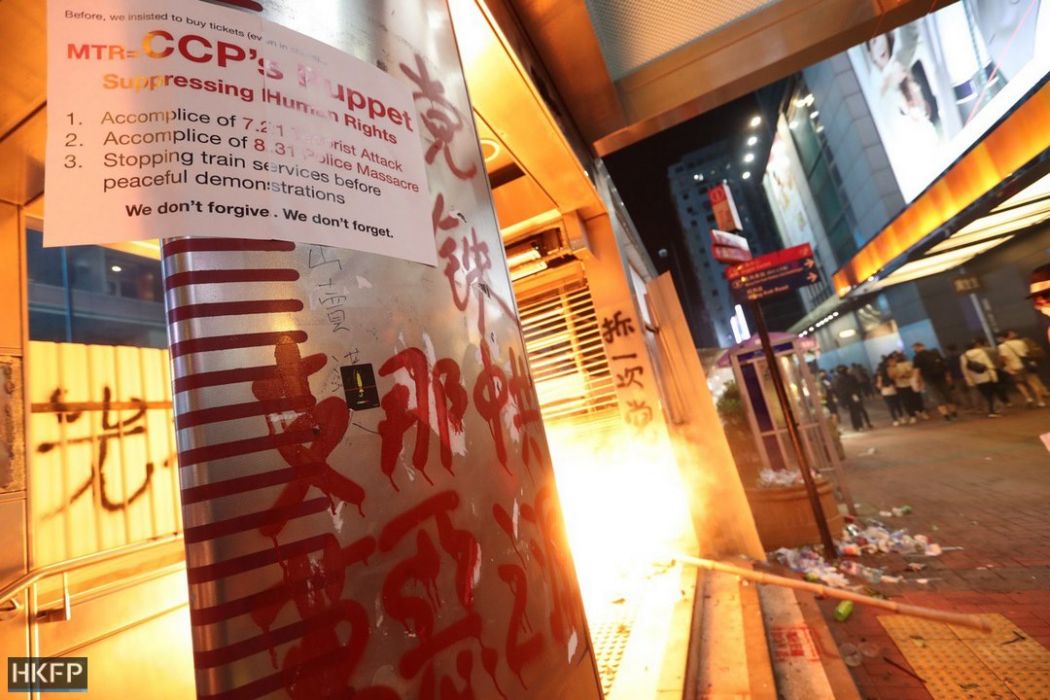
The anti-mask legislation was implemented two weeks ago using the 1922 Emergency Regulations Ordinance in response to large-scale protests, sparked by an ill-fated bill which would have enabled extraditions to China.
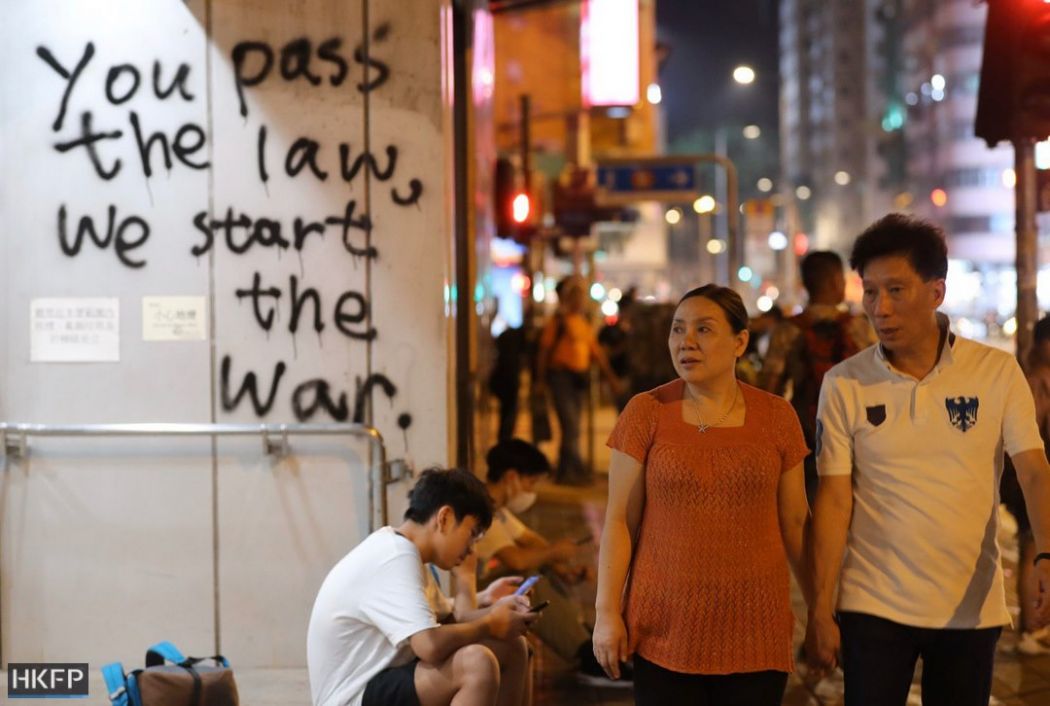
A video shows riot police on Sunday night firing a tear gas canister directly at a journalist’s head from close range. She was protected by a helmet.
Video: Telegram. #hongkong #hongkongprotests pic.twitter.com/AoEML2mSxw
— Hong Kong Free Press (@HongKongFP) October 20, 2019
The city-wide unrest, now entering its 20th week, has evolved into sometimes violent displays of dissent over Beijing’s encroachment, democracy and the police’s handling of the crisis.

Sunday’s march was originally organised by the Civil Human Rights Front, but the pro-democracy coalition abandoned the plan after they failed to appeal a police ban. Its vice-convenor Figo Chan estimated that around 350,000 people nevertheless took to the streets.
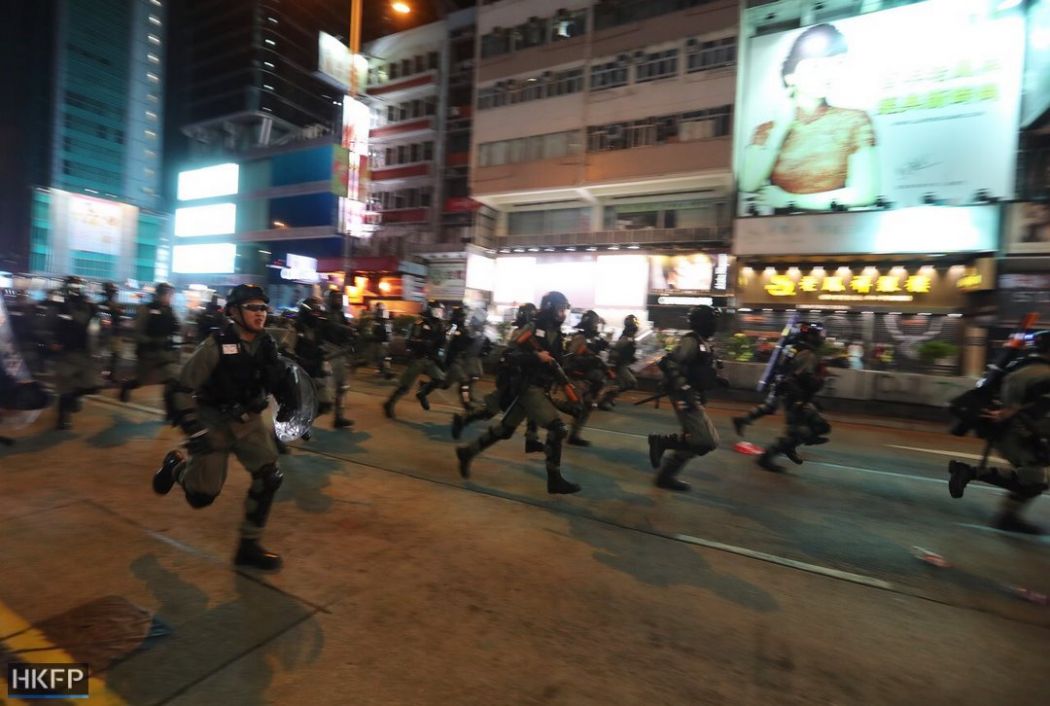
Cat and mouse chases continued into the night as police pursued protesters northwards on Nathan Road.
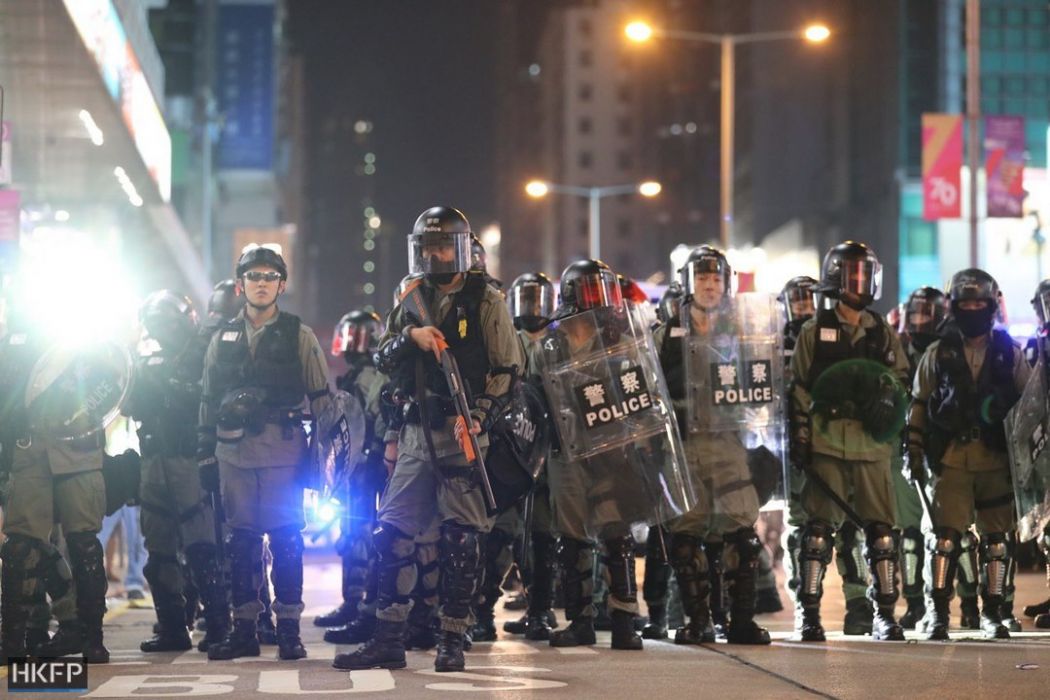
MTR closures
The MTR closed multiple stations during Sunday’s protest, as it condemned the “the unlawful acts of the rioters” for vandalising stations.

The MTR Corporation has been under fire after the largely government-owned transit firm declared it would close stations in the area of protests.
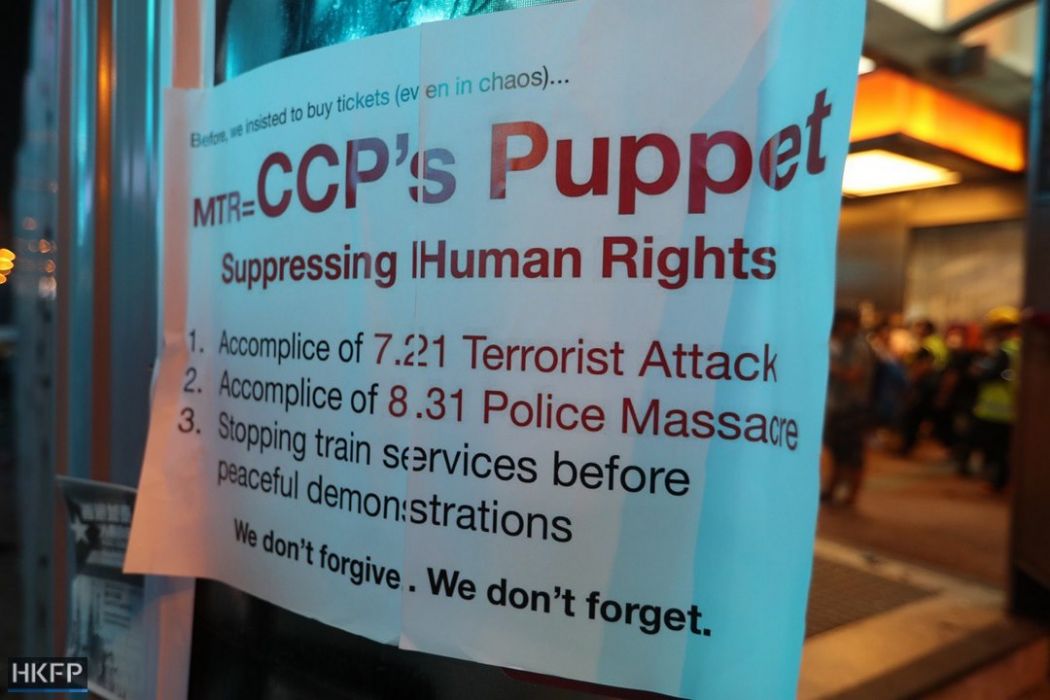
A sit-in protest is planned at Yuen Long station on Monday to mark three months since a mob attacked commuters and protesters at the station. The company said the station would close at 2pm and the rest of the network would close at 10pm for repairs.
Hong Kong Free Press relies on direct reader support. Help safeguard independent journalism and press freedom as we invest more in freelancers, overtime, safety gear & insurance during this summer’s protests. 10 ways to support us.

